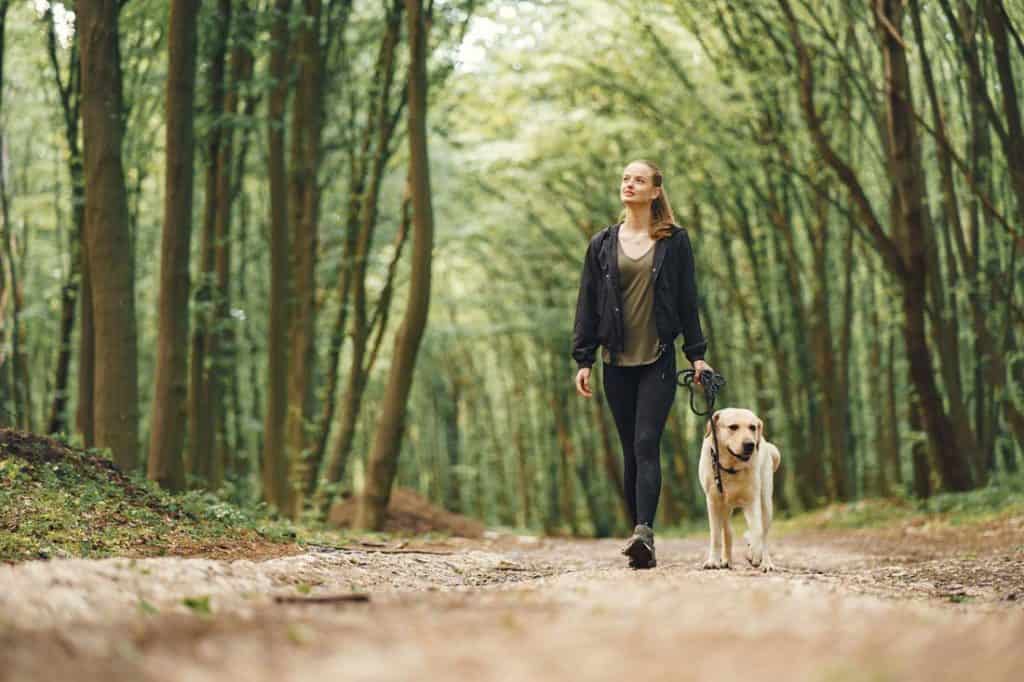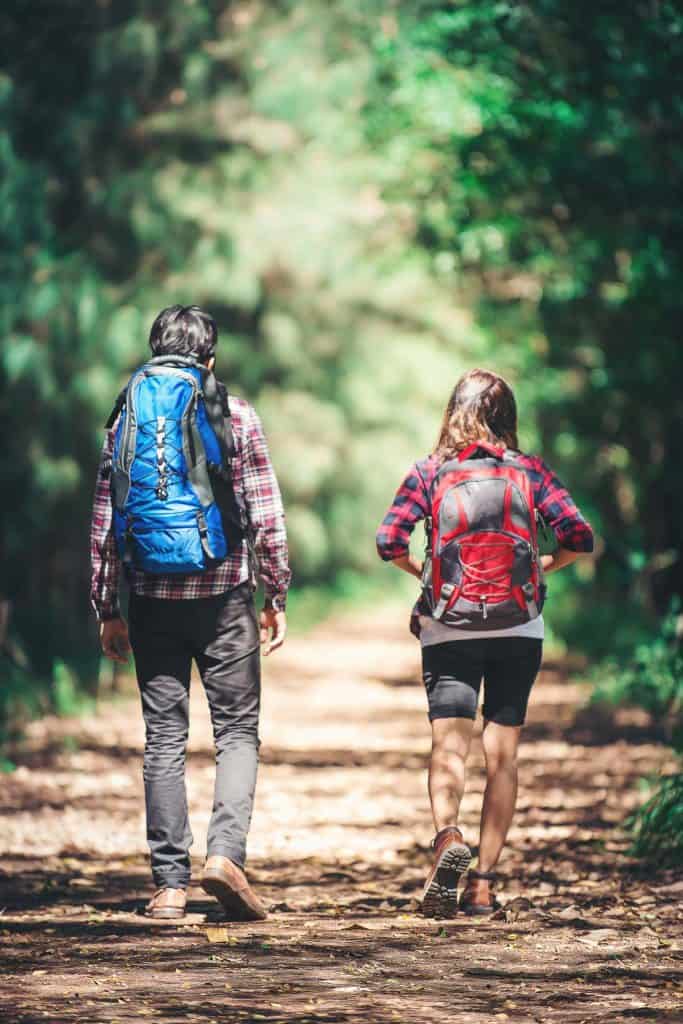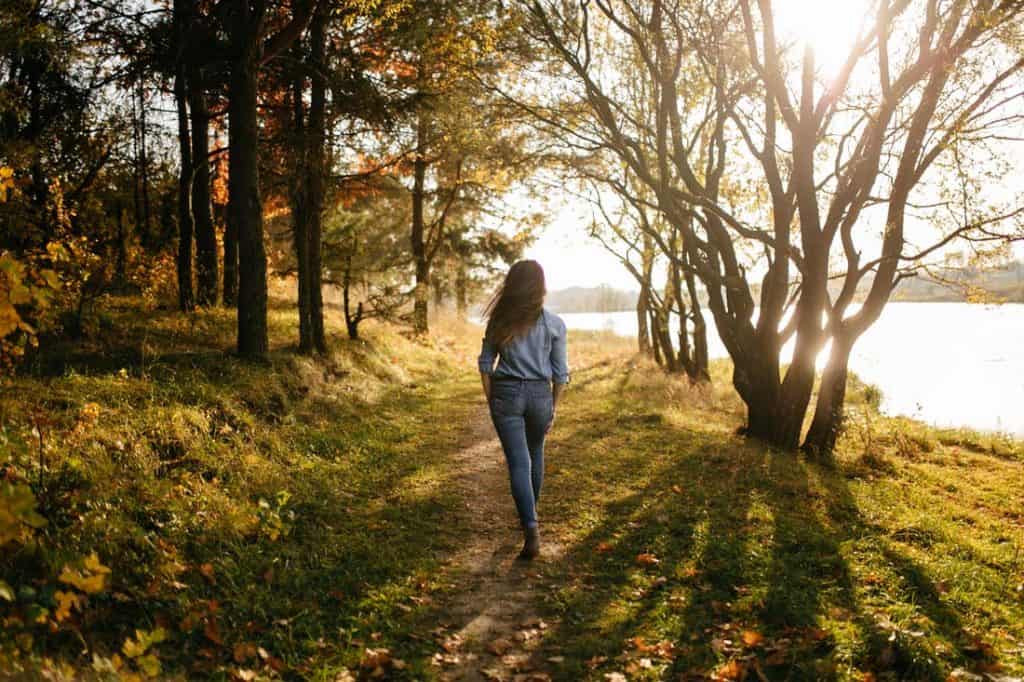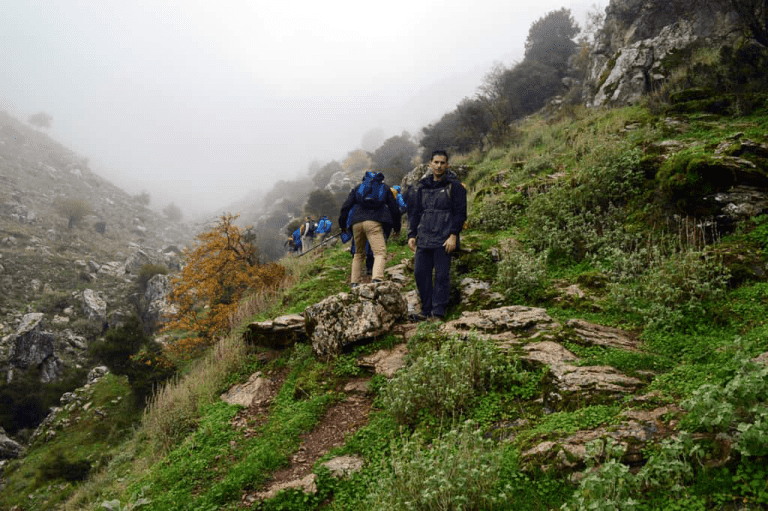Let’s thinκ it for a moment. Modern people try to reproduce nature at every given opportunity. They even do that in their home or work. A flowerpot, a few flowers in a vase, and paintings depicting nature show an inner urge for a person to have elements reminding nature around him. Nature inspires people, and mindful walking meditation is heightened when done outdoors. It is not by chance that studies show that mindful movement reduces stress.
Something drives a person into that need to reproduce that concept around him, especially when he has no direct contact with nature. Most of the time, people seek a small trip or excursion in nature or maybe a pick-nick. They want to walk in nature and remember how they did such in their youth.
A person acts differently when in nature. Especially when he has lived in it for a long time, nature changes a person, or better stated… nature reminds him what he must become again. Each one of us, when we are open to receiving things, can get lessons from life and understand life better wherever life resides.
The process of meditating while walking in nature is otherwise called forest bathing (in Japanese: shinrin-yoku). The term surfaced in Japan for people to both experience the extensive amount of forests and reduce the overworking burn-out.
Insights for Mindful Walking Meditation in Nature

There are ten things I understood (that’s a heavy word, though) by walking in forests, next to rivers, through canyons and gorges, or when cool or ugly things happened to me while doing such. Of course, the same things can occur far from rivers and forests and mountains and gorges.
These things (you are about to read) happen in our everyday life in the cities, and they occur in a more complex way since nature and its beauty in our cities are usually primarily contained.
Let’s face it. A walk in the forest does not compare to walking through a road full of garbage, even if the lessons you learn are different in each case.
By walking in nature, you gradually can realize that forests, mountains, and gorges contribute in the best way to self-awareness. This is a unique property of nature since you are surrounded by things that are also alive yet not negatively oriented (trees, water, etc.).
To walk next to or through water is -by itself- an active effort of inner purification. Next time you happen to be next to a river, immerse yourself in the water (or just your feet) and think/visualize that you are baptized again. Believe that it is happening.
Visualize whatever troubles you have washed away. This is amazingly effective, especially with running water, wherever this may be.
So, all these are an opportunity to start observing things.
Here are ten things that I observed through my quite frequent excursions for mindful walking meditation in nature. Also, get more inspiration about more mindful activities.
1. Obstacles in Walking Meditation
“Obstacles” will happen, whether you want it or not.
When you have a strong desire to become better at something, for example, rock climbing, then the exact thing you need will happen to achieve this ability.
Most of the time, things will happen in a different way than the one you may think they will be (so don’t think about it). As your ability is enhanced, more “difficult” situations will occur to overcome. This time, the cumulative experience you sum up will help you overcome them more easily.
The exact circumstances (precisely the same) will return if the lesson has not been learned. They will return again and again until either the mere memory of the experience and its solution arise or (even better) when you act automatically to the proper solution due to the conscious understanding you have managed to acquire from that lesson.
2. Developing Courage and Resilience
When the virtue of courage needs to be developed as you climb, there will be moments and circumstances where the only solution will be to leap of faith. You will realize how easy it was to do that transition when you take that.
This doesn’t mean that you will ignore danger, but rather it means that you will perceive danger and the urge to provide a solution by risking a safe stand. Standing in a firm/solid place -especially in rock climbing- is never such, mainly when you are stuck in the same place for too long. When you remain in such a place/stand, you get more tired, and the leap of faith becomes more difficult.
Of course, when the place/stand is too comfortable, you can stay there for a long time, but this means that you don’t move further. When this happens for too long, “something” will happen to “shake you”…
3. Developing Concentration

Every time you need to be concentrated, a rapid sequence of events (in seconds) will place you in such a state. For example, a small tree branch may scratch you a bit (since you are not concentrated) and stop you before you fall into the hole ahead and get seriously injured.
The longer you can stay focused, the better you will perceive the motive and patterns behind a thought that arises and the evolving situation. In some “way,” life smacks you when you need to straighten up and focus.
4. Learn to Focus Back When Mind Drifts
You can find – among other things – that what you experience and happens is what you deeply desire, far from a simple thought. If your ideas relate to the fear of getting injured, then you won’t enjoy the ride since you will see obstacles instead of moments of experience.
Additionally, the more profound fear of getting hurt will guide your steps and define your movement, and thus you will get injured. On the other hand, by perceiving that fear, you have the opportunity to understand the actual status of the situation you are in and accept it as it is.
At that point, enjoyment of even what seems like a tricky thing can arise. For example, you are going through something that your physical status does not help you perform efficiently.
5. Seeking Help
Due to some weird reason, you always get some help, unless you worry about whether you get injured or die or get lost, where this perception is under complete mist.
There is always a direction and a solution. Sometimes the key is to stay still or think that you do such. The answer is revealed when the clouds of thought are lifted.
The solution is, many times, the guidance from the mind. Sometimes you do the right thing without understanding how. Sometimes, your companion along the same path or in the team you participate in will provide a solution or the thrust you need. Sometimes without them even knowing, they do.
6. Accepting That Everything Constantly Changes
There is nothing static in nature. Even the decomposing tree fallen on the dirt is not dead but constantly moving as it dissolves to its essential elements.
The tree is transformed into something else, valuable to its environment, which also becomes something else. You cannot stay static since there is no state in life. For example, let’s say you walk on a mountain and night falls. You wanted to come down before night.
So, you made a wrong calculation. There, your options are to either find your way during the nighttime or find a place to accommodate yourself and some food until morning comes. It is always better in the morning light.
But if you stay still/static there, you will have a problem. However, do keep in mind that conscious stillness is an action. There is always a phase of darkness during a challenging situation, but then morning always comes.
7. Gain Experience and Insights
While the immediate perception of a current and future evolution of things is always helpful, this doesn’t happen in such a simple way. Experience, knowledge of the same situations, preparation, and the right equipment and tools help you move further.
Without the experience of different past cases, it is not easy to be adequately prepared to deal with an unpredictable situation.
When experience changes to actual knowledge, then situations change. Conscious understanding of an experience produces courage.
8. Understanding Fear and Reality

Even if you can understand from all the things you read so far, fear is always present and emerges in any opportunity allowed.
Yet, it also remains a good reality check control point. Even along a simple hike, its immersion can create instant triggers of questioning your present situation and thus re-evaluating your current data.
Even if these data are distorted as they instantly pass through the filters of fearful thoughts, their actual examination eventually produces the correct data to act upon. Another way to send fear away is to smile when such fearful thoughts emerge.
This shows that you have seen them as they come forth. In that way, the present is enjoyed better.
9. Cultivate Love and Compassion
When you realize how the different ecosystems are connected in a forest, you may start asking yourself if there is the same analogy/concept for people. When you know that this concept applies to people, you start seeing “mistakes.”
People create obstacles in their life and the life of others. At least along with the popular perception of what mistakes are. These mistakes are intentionally placed in quotation marks since I do not think they exist.
Put, people with a strong will for something and without considering the outcome of such a choice in the broader ecosystem of humanity damage that ecosystem.
It seems like a thing kept in a balance due to a concept of opposite poles. When one of the poles gets overloaded, imbalance happens, and circumstances change for balance to be restored. However, life itself is self-regulated, and balance is restored.
Such usually happens through pain (even if the pain is an outcome of how we perceive each situation). The same thing happens in nature. So, by observing all these through nature and how the system is restored (or rebooted), we may give birth to the desire to eliminate this imbalance, and maybe a more significant or better or more profound interest for others’ well-being be born.
So, by introducing the unified, connected ecosystem factor in the equation, maybe the perception that we are all one thing is not far away.
10. Experiencing Awareness
So, what happens is that we can think of many things regarding walking meditation. Yet the best seems to be to walk and perceive what is happening around you. In that way, you gradually become one with the environment and what is happening around you. You can enjoy colors, sounds, “things” expanding, and you feel that you are alive. You can feel being whole and alive.
There you may experience thoughts like, “Oh, how wonderfully alive I feel now! How well do I feel now and how great it is, and I want to be like that all the time”!
And if at that point you feel like you are in a dream and you “lose the ground under your feet” and you are “above simple mundane life,” worry not! Some rock that is not firm in place or a small piece of slippery mud will appear under your feet, for you to slide and fall on the ground!
There you will start again to restore balance inside you. There you smile because now you may realize how life can work.
Well, isn’t life like that indeed? A constant sum of overturns, bumps, rises, and all over again?
So keep walking mindfully and looking at what is happening without labeling it. Either way, everything is happening for you to learn from it. Mindful walking doesn’t require a forest to happen. You can practice wherever you are walking; even in crowded cities.
When you learn, the exact thing will happen again.
Three Books for Mindful Walking Meditation
After reading my personal experience insights in this article, you want to also have a look at these 3 books, all written by the late Thich Nhat Hanh. They are all about walking meditation.
Walking Meditation
What if every step you took deepened your connection with all of life and imprinted peace, joy, and serenity on the earth? See more about this book.
How to Walk (Mindfulness Essentials)
Slow, concentrated walking while focusing on in- and out-breaths allows for a unique opportunity to be in the present. There is no need to arrive somewhere—each step is the arrival to concentration, joy, insight, and the momentary enlightenment of aliveness. See more about this book.
Peace Is Every Step: The Path of Mindfulness in Everyday Life
Insights, exercises, and more to increase our awareness of our own body and mind through conscious breathing, which can bring immediate joy and peace. See more about this book.
Cheers!
You may find this article interesting: Go Exploring: Best Dolomites Hiking Trips.
